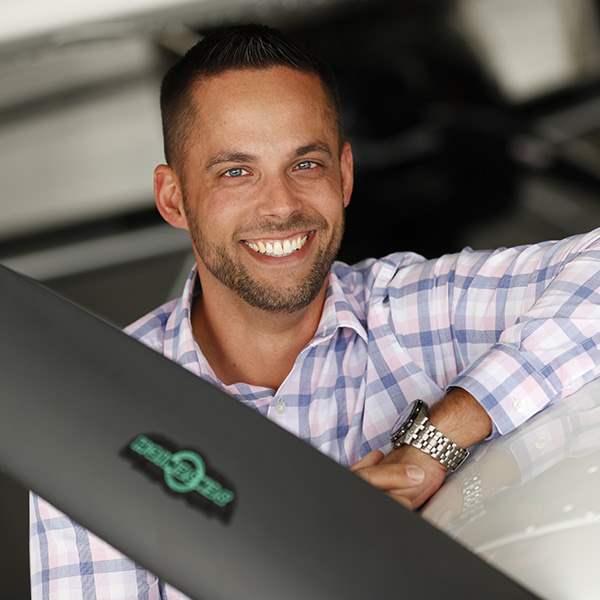Flying Eyes Optics
Eyewear designed by a pilot for pilots
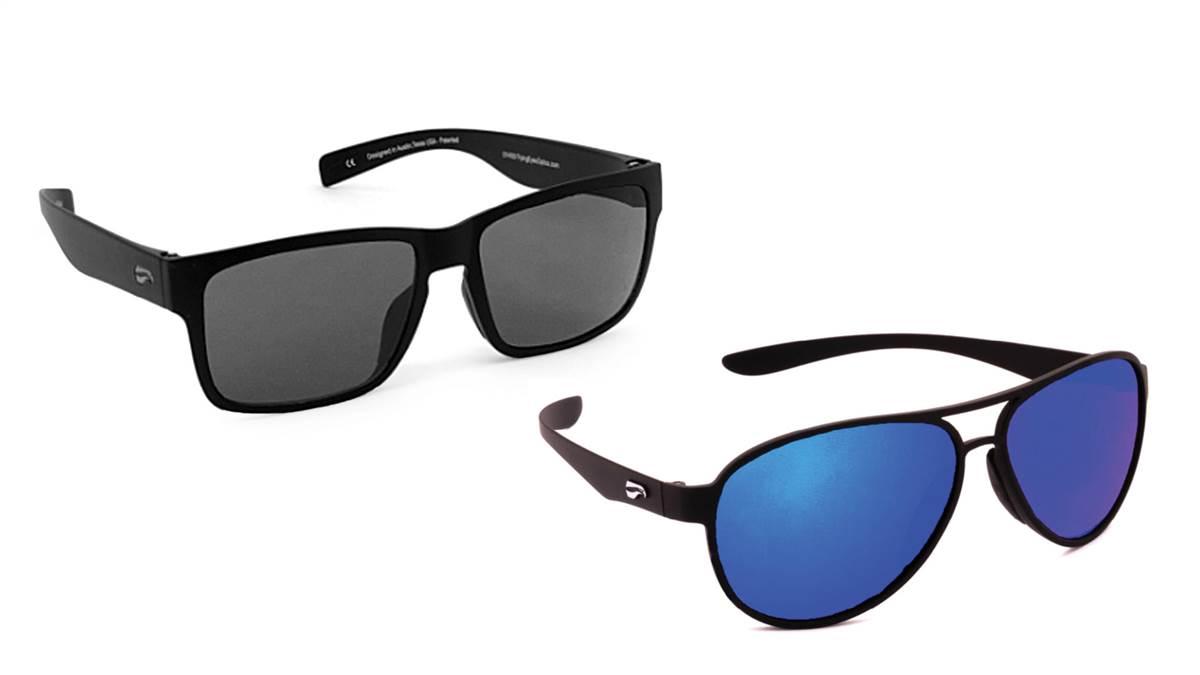
The frames arrived in a well-packaged white cardboard box. Inside were two pairs of glasses, both with polycarbonate lenses, Resilamide frame and temples, and each in a zippered, hard-sided case with a microfiber bag that doubles as a cleaning cloth.
Out of the box, I admit they felt cheap, and here’s why: They are the lightest frames I’ve ever held. As a former prescription glasses/contacts wearer (no longer, thanks to the advent of modern vision correction methods) with a -8.0-diopter prescription, my glasses were always heavy, even with the special lightweight lenses I paid extra to wear. The Flying Eyes Optics glasses were so light that I, and several of my AOPA colleagues, felt like we weren’t wearing glasses at all. That’s a big plus, especially for those long flights with an over-the-ear headset.
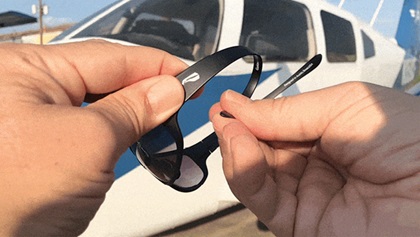 Flying Eyes offers several styles of frames to fit heads of all shapes and sizes. The number of frame color and lens color and gradient options mean that you won’t see 50 other pilots at your local fly-in with the same combination of frame and lens, unless their taste in eyewear is as good as yours. Flying Eyes also offers polarized lenses for those times you aren’t flying.
Flying Eyes offers several styles of frames to fit heads of all shapes and sizes. The number of frame color and lens color and gradient options mean that you won’t see 50 other pilots at your local fly-in with the same combination of frame and lens, unless their taste in eyewear is as good as yours. Flying Eyes also offers polarized lenses for those times you aren’t flying.
The “Kestrel Aviator” frame is matte black with gradient mirrored sapphire lenses. The gradient lens blocked the bright light coming from above the instrument panel but allowed me to easily view the inside of the cockpit without having to adjust the glasses. It also meant not having to remove the glasses to be able to see inside the cockpit in twilight conditions.
The thin temples didn’t interfere with the seal on my Bose A20 headset; even when I took them off and put them back a couple of times. As with most sunglasses, everything had a slight yellow-orange tint, but most sunglasses wearers are accustomed to a slight change in color when looking through tinted lenses.
The “Osprey” frame also comes in matte black but with solid gray lenses. Like the Kestrel, the Osprey is extremely lightweight. The solid gray lens cuts out the harsh, bright light on a sunny day. Both frames came with nose pads for comfort.
Flying Eyes Optics has a 30-day exchange policy, a 90-day lens replacement guarantee, and a loss protection plan you can add to your purchase that’s valid for one loss per pair of glasses within two years of purchase. The Resilamide frames are super flexible; I was able to bend the temples 180 degrees and they didn’t break. That’s great if you tend to be rough on your eyewear.
Here’s another benefit of the frames. Ever hear of Jason who runs a YouTube channel called Rebuild Rescue? He’s 230 pounds (by his own admission) and I saw him lay his Kestrel Aviator glasses on the ground, crawl under a Socata Trinidad to do some work, then promptly get up off his crawler and accidentally step on the glasses, and the lenses and frames were fine.
PRICE: Frames start at $199 for nonprescription lenses
CONTACT: flyingeyesoptics.com
PlaneTags
Own a piece of history
By Alicia Herron
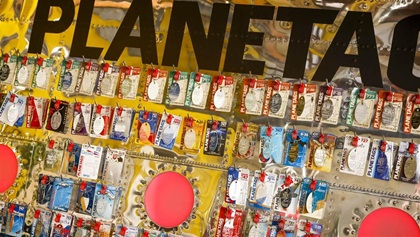 A combat-worn Japanese Zero, a Beechcraft Starship Queen of the Skies, and a Cessna 172—each of these aircraft holds a place in aviation history. And with the advent of PlaneTags, a part of each is now available for you to hold in your hand in the form of luggage tags or key rings.
A combat-worn Japanese Zero, a Beechcraft Starship Queen of the Skies, and a Cessna 172—each of these aircraft holds a place in aviation history. And with the advent of PlaneTags, a part of each is now available for you to hold in your hand in the form of luggage tags or key rings.
Everywhere you look inside MotoArt’s Torrance, California-based shop is something you’ve never seen before. Propellers line the walls, and wings, elevators, and ailerons hang from the ceiling like chrysalises waiting to be reborn into something new.PlaneTags was born from MotoArt, a business started by sign designers Donovan Fell and Dave Hall. MotoArt repurposes old aircraft parts into high-end, handcrafted furniture. The PlaneTags side of the business began after the purchase of an old industrial punch press. PlaneTags quickly achieved success, and since then, the company has thrived. Launches of new tags often sell out within minutes, and MotoArt hosts an annual festival where enthusiasts from around the world visit the factory and share their collections with each other. The company travels to a variety of airshows, and you can even find their gear for sale in the Smithsonian’s Air and Space Museum.
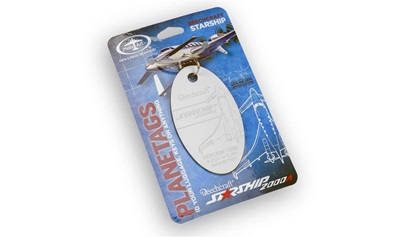 Everywhere you look inside MotoArt’s Torrance, California-based shop is something you’ve never seen before. Propellers line the walls, and wings, elevators, and ailerons hang from the ceiling like chrysalises waiting to be reborn into something new (see “Aviation Artistry,” September 2017 AOPA Pilot). A reception desk made from an airliner engine commands the middle of the warehouse, and a nearly finished desk made from a wooden biplane wing waits for finishing touches to the side. In their outside storage space, baskets of skin wait for their turn on the punch press; some skin is familiar, and some is from exceedingly rare one-of-a-kind airplanes.
Everywhere you look inside MotoArt’s Torrance, California-based shop is something you’ve never seen before. Propellers line the walls, and wings, elevators, and ailerons hang from the ceiling like chrysalises waiting to be reborn into something new (see “Aviation Artistry,” September 2017 AOPA Pilot). A reception desk made from an airliner engine commands the middle of the warehouse, and a nearly finished desk made from a wooden biplane wing waits for finishing touches to the side. In their outside storage space, baskets of skin wait for their turn on the punch press; some skin is familiar, and some is from exceedingly rare one-of-a-kind airplanes.
The Zero PlaneTag is in fact from the very Zero that shot down Louis Zamperini, local Torrance legend, subject of the book and movie Unbroken, and Torrance’s Airport’s namesake.Each PlaneTag comes with information about the very tail number that the skin was harvested from, and each is a serial numbered limited edition. PlaneTags acquires the skins it uses from a variety of places, but mostly from boneyards, and occasionally rarer acquisitions result from restoration projects. Other times aircraft parts are simply donated or traded in, sometimes as a down payment on MotoArt furniture. And don’t worry, the company only salvages parts from completely retired or totaled aircraft that could not fly again.
Any aviation enthusiast, from airline pilot to freshly soloed student to aircraft spotter, is sure to find a tag that they connect with, and enjoy this unique way to interact with history. [email protected]
